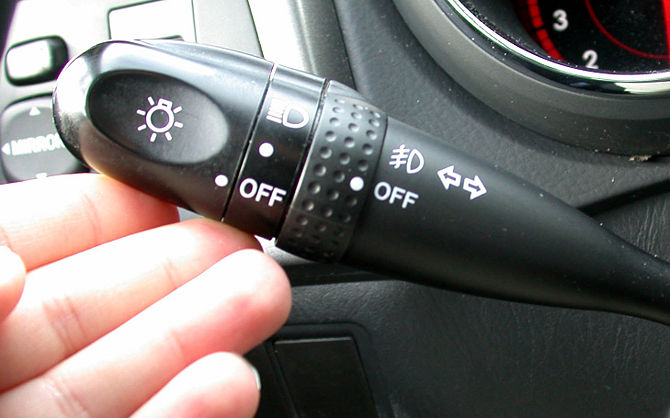
The Motorcycle Safety Foundation Urges Car Drivers to Use Turn Signals Consistently During Motorcycle Awareness Month; Turn Signals as a Barometer of Safe Motoring:
There is a clear and present danger in today’s traffic environment: only about half of all car and truck drivers use turn signals. Whether due to drivers being distracted or careless, motorist-to-motorist “communication” is at an all-time low. A study conducted by Response Insurance found that 57 percent of drivers admitted they do not use their turn signal when changing lanes. Their reasons:
They don’t have time (42%)
They’re too lazy to bother (23%)
Fear of forgetting to turn it off (17%)
Too busy changing lanes a lot to use it (12%)
Simply not important (11%)
No one else signals (8%)
Adds excitement to driving (7%)
(Note: total exceeds 100 percent since respondents could select multiple reasons. Study conducted in 2006.)
Similarly, a 2012 observational study published by the Society of Automotive Engineers found that 48 percent of drivers did not use their turn signals while changing lanes and 25 percent of drivers did not use signals when making turns at intersections. SAE estimated this neglect causes roughly two million crashes each year. Along with this behavior, drivers also do not always look over their shoulders or glance at their mirrors before changing lanes. These combined inactions threaten all roadway users, especially motorcyclists, who are more vulnerable to unexpected intrusions into their path of travel than car or truck drivers, since they lack the four-wheelers’ thousands of pounds of protective structure. “Using turn signals is one of the most basic rules of the road, as it connotes respect and cooperation, and is the primary method of vehicle-to-vehicle communication. Drivers need to take driving seriously and pay attention to the traffic environment,” said Dr. Ray Ochs, vice president of training systems at the Motorcycle Safety Foundation.
To that end, Dr. Ochs said MSF is calling on car and truck drivers to make a renewed effort to consistently use their turn signals during Motorcycle Awareness Month this May, in the hope that this will become an ingrained habit. Ochs added, “This could lead to more alert, more responsible, and safer motoring on American roads.” Serious motorists know that safe driving is built upon a host of small acts – using signals, looking over one’s shoulder before changing lanes, maintaining an appropriate following distance, keeping right except to pass, alternating the merge when two lanes become one, using a speed appropriate for conditions, and more.Sustaining these small tasks helps support the higher-level tasks of driving, such as controlling the placement of the vehicle on the road and within the traffic mix, identifying risks, making split-second decisions and being able to execute the proper action (braking, swerving, etc.) in emergency situations, passing safely and correctly, and more. As such, turn signal use can be thought of as a kind of barometer of safe, cooperative motoring.
The Motorcycle Safety Foundation promotes safety through rider training and education, operator licensing tests, and public information programs. The MSF works with the federal government, state agencies, the military and others to offer training for all skill levels so riders can enjoy a lifetime of safe, responsible motorcycling. visit msf-usa.org to learn more